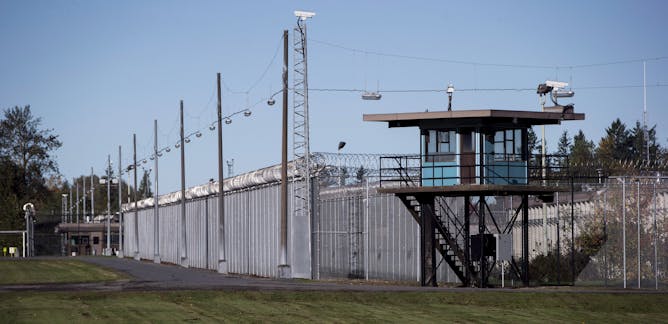
Artículos sobre Jail
Mostrando 1 - 20 de 39 artículos

Placing migrants who are not criminals in prisons risks serious violations of their human rights and perpetuates narratives about the criminality of immigrants.

With a series of high-profile cases in the news, parole is back in the spotlight. Let’s unpack some of the most common misconceptions about what parole really means.

There are proven ways to significantly reduce violent crime within the next five years. It requires becoming not “tough on crime,” but “smart on crime” before it happens.

Deepfake pornography raises questions about consent, sexuality and representation. The issue is more complicated than online misogyny — new criminal laws are not our best response.

Pierre Poilievre’s “tough-on-crime” rhetoric relies on discredited ideas that can lead to overly harsh penalties and actually increase crime.

Until the justice system reckons with its systemic racism, pre-sentencing reports will fail to shift the way the courts see Black offenders.

Receiving visitors while behind bars was a raft of benefits, but people have reported many barriers. It must be made easier to help drive down recidivism rates.

Lockdowns can have severe impacts on an inmate’s mental and physical health and well-being.

People with mental health challenges are more likely to die in custody. The coroner’s inquest into the death of Soleiman Faqiri in an Ontario jail is one such tragedy that calls out for reform.

Higher jail mortality is related to jail turnover rates and demographics.

Mesopotamia’s prisons were built for detaining people, not punishing them. But they shaped powerful ideas about justice and reform that aren’t so different from today’s.

Most people leaving prison face an uphill battle of service navigation that is too often deficit-focused, intentionally seeking out the failures of the individual and centred on punitive responses.

This new play by Suzie Miller, the one-time lawyer who wrote Prima Facie, ventures into dark places few want to confront.

As a dangerous offender, Paul Bernardo is unlikely to ever be released from custody after 30 years behind bars — even after his transfer to a medium-security prison.

Indigenous people shouldn’t have to fear police who are supposed to protect them but instead still act as judge, jury and executioner.

Those determining bail must reflect on their own beliefs and show restraint as they determine risk to avoid relying on false racist narratives. So should those calling for bail reform.

To protect communities, we must improve the likelihood that accused people can comply with their bail conditions by offering greater support on several fronts, from social services to law enforcement.

To resolve growing violence in schools, policy conversations about gun violence need to include community programs that dismantle systemic barriers and inequities.

There is no good legal or moral argument for denying prisoners their rights as workers. Canada must overhaul how it deals with prison labour.

People don’t give up their right to be mobile or their right to make decisions about their lives simply because they are forced to flee untenable circumstances.
